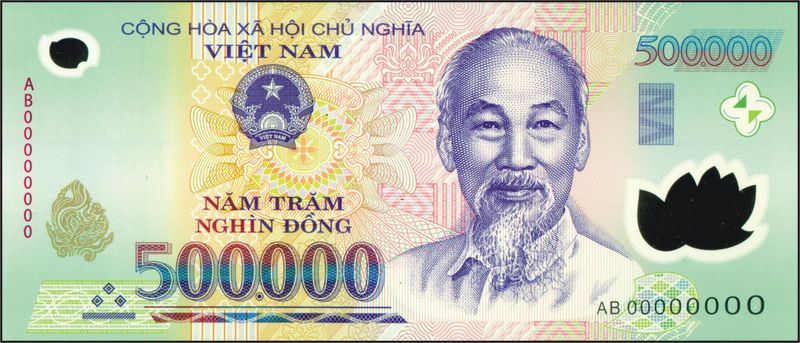A great way to drive yourself crazy is to constantly track your investments. A great way to lose control of your financial future is to never track them.
You probably have a 401(k), and you’ve probably given it zero thought since the day you enrolled. If you’re the kind of person who memorizes his login and routinely checks his 401(k)s per-share value, congratulations. Now step back and check it less often. Once a quarter should do it. If you see any glaring omissions or mistakes – e.g. a 401(k) whose managers foolishly loaded up on Sallie Mae or Capital Bancorp stock, only then should you panic if your 401(k) loses money. Otherwise, relax and realize that it takes years if not decades to see significant changes.
If iit looks like the terms are synonymous, they aren’t. A 401(k) is a retirement savings plan, authorized by the federal government in the early 1980s. The government doesn’t have anything to do with the plan, it simply set the law that said you don’t have to pay taxes on the money you and/or your employer put into the 401(k) until you retire and start taking money out of it. (The term “401[k]” refers to the relevant section of the IRS code.)
Review your 401(k) accounts quarterly to determine that they’re allocated the right way, and that they’re performing. How much do you invest in each fund, stock, or plan available? How much risk are you willing to assume, and how do long you have to invest? (A delicate way of asking how close to death you are.)
Here’s how your 401(k) should be allocated, in general. Err on the side of equity, where you have the greatest opportunity for long-term returns.
Most 401(k)s consist of mutual funds. They’re easy for the 401(k) manager to operate, and they achieve the presumably laudable goal of keeping your eggs in several baskets. Mutual funds themselves are supposed to differ in their objectives – some are for aggressive investors who love to take risks while exposing themselves to huge downside, others are for conservative investors who play not to lose. Still others are for those who want to invest in companies whose stock prices are unduly low, or those who want consistent income in the form of regular dividends paid out to shareholders of the underlying companies.
A mutual fund is a bunch of publicly-traded stocks, bought en masse by a financial services company, which then sells uniformly proportioned chunks of the bunch to whomever wants in. This is a wild oversimplification, but say a firm buys $1 billion in Adobe stock, $2 billion in Boeing stock, and $3 billion in Chevron stock. The firm then creates a mutual fund with the stock, and offers it to the public. If you were to buy a $1000 share of the mutual fund, it’d consist of $166.67 worth of Adobe, $333.33 worth of Boeing and $500 worth of Chevron. The next day, when Adobe’s stock price falls 2.7% while Boeing’s rises 1.1% and Chevron’s rises .8%, the relative proportions of your holdings (and everyone else’s) change correspondingly.
Let’s start with an ordinary fund, the Allianz NFJ Dividend Value Fund. (Mutual funds try to be candid by putting the fund’s objective in the title. It’d be as if Crocs changed the name of their product to “Celibacy Shoes”.) Allianz is a financial services company (the 2nd biggest insurer in the world) based out of Munich. They hold this mutual fund, then get a reseller (in this case Morgan Stanley Smith Barney, but it could be one of many) to offer it to the public (that’s called underwriting.) MSSB then gets one of their new hires, probably a 20-something chick who’s all proud of the MBA she just earned, to do the grunt work of knocking on doors, selling 401(k)s consisting of mutual fund shares to human resources directors. Your company’s HR person schedules a meeting for all the employees, you attend it, the MBA chick passes out a bunch of indecipherable forms, makes a vague promise about a lifetime of financial security, and you sign up.
First, what does that acronym stand for? No-load Fund/Japan? National Fiscal/Joint Account?
It’s named after the guys who founded the fund, then sold it to the Krauts: Najork, Fischer and Johnson. The Allianz NFJ Dividend Value Fund trades on NASDAQ and has a ticker symbol (PNEAX), just like ordinary stocks do. Enter the symbol on Yahoo! or Google Finance, and it’ll tell you irrelevant information (the managers’ names, the R2 coefficient of determination) and some relevant information (a few of the stocks that comprise the fund.) It’s listed near the bottom, as “top 10 holdings”. Those holdings comprise 32.89% of the fund’s total, which is about average for a fund’s 10 biggest components. Does that help?
If I showed you one-third of a new car, and kept the remaining two-thirds under a tarp, would you be interested in buying it?
You need to do a few seconds worth of excavating on the fund’s site. Google the name of your fund. This will likely take you to a page with the same semi-helpful information; the fund’s biggest components. Look for a link that says “complete portfolio holdings” or something similar. Here’s what you’ll learn:
-your fund probably has 80-90 components
-the ratios that made up the fund the day it went live bear no resemblance to the fund’s current makeup.
Take a fund that consisted of equal parts of 80 companies, then 40 of those companies went south during the ensuing years. By definition, they now comprise less of the fund, because they’re worth less. The components that gained value – and any group of 80 companies has to include some winners – will thus make up a higher percentage of the whole. Which would appear to make the fund’s managers look good, except it can’t help but make them look good. Say your mutual fund bought Wal-Mart stock 20 years ago, when it traded at $7. It now trades around $54. All things being equal*, the fund’s percentage of Wal-Mart stock held has gone up almost 8-fold. That’s not prescient, that’s inevitable. The point isn’t to find a fund that consists of nothing but rockets; such a fund doesn’t exist. Instead, you want to preserve value, be aware if you aren’t, and at least understand where your money’s going. “Set it and forget it” doesn’t work when Controlling Your Cash.
*Which they never are, but that’s unavoidable.





